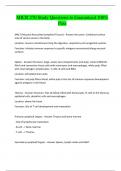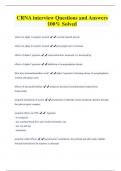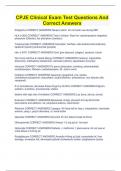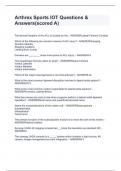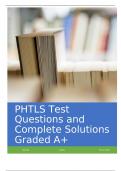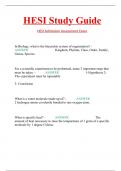Exam (elaborations)
MICR 270 Study Questions to Guaranteed 100% Pass
- Course
- Institution
MALT (Mucosal Associated Lymphoid Tissues) - Answer Structure: Combined surface area of various areas in the body Location: mucous membranes lining the digestive, respiratory and urogenital systems Function: Initiates immune response to specific antigens encountered along mucosal surfaces Sple...
[Show more]
